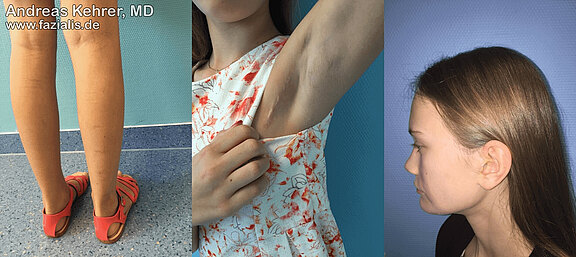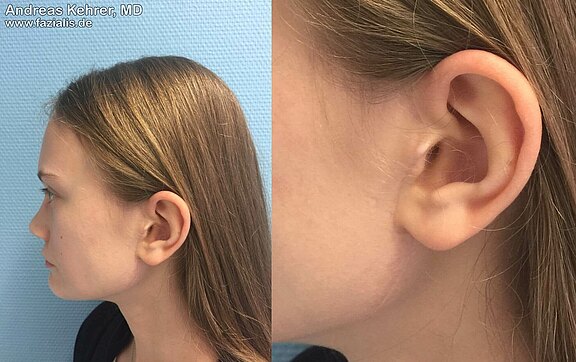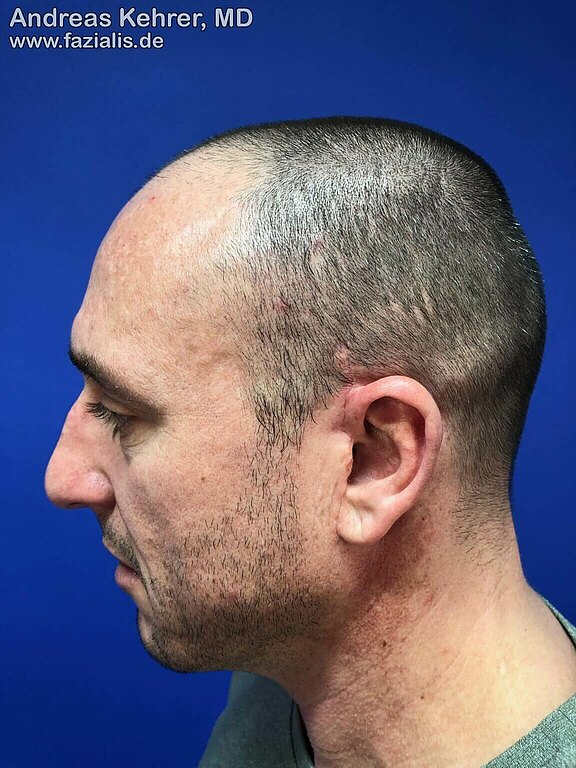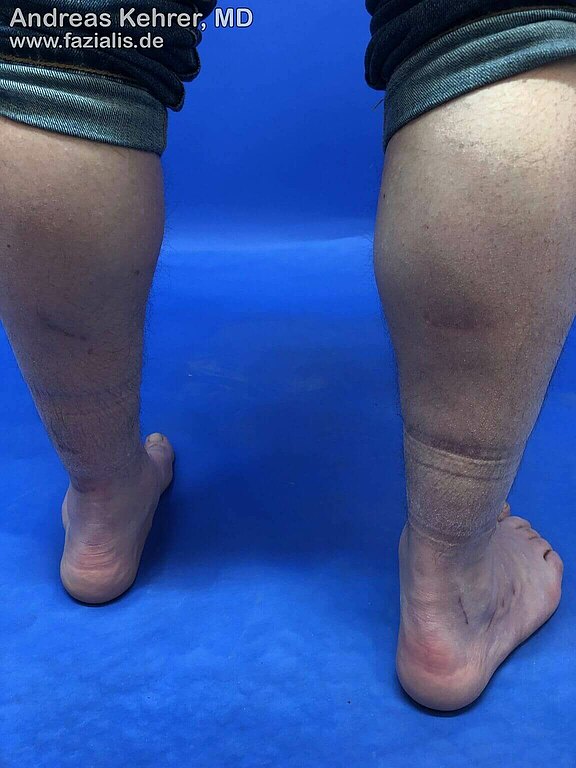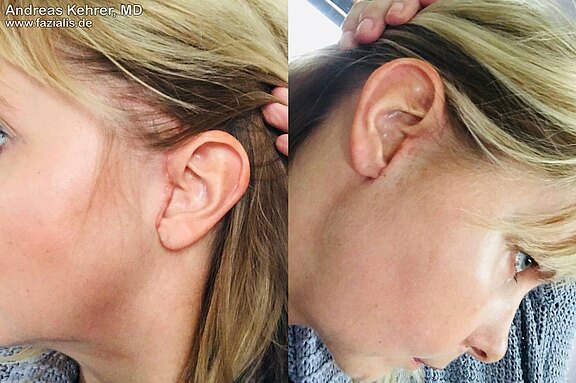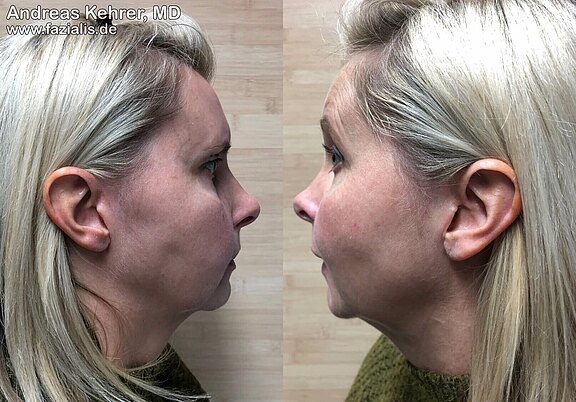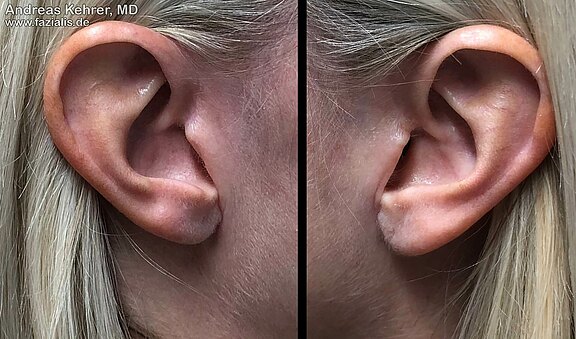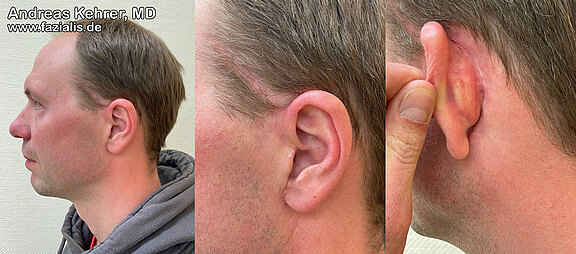The scars, which have to be accepted by the patient for facial reanimation, are limited and are usually tolerated very well. 10-year-old female patient: Unobtrusive scar on the right lower leg one year after removal of an additional donor skin nerve via small incisions (left picture). In addition, a muscle was removed from the thorax to restore the smile through a small, well hidden incision in the armpit (center). After scar healing of the "facelift" incision in front of the ear and transplantation of the small functioning muscle into the left cheek region, only barely perceptible scars and an almost unchanged facial contour are visible (left picture).
Low-scar surgical techniques should be given the highest priority in any facial surgery. Inconspicuous scars, which cannot be perceived by the layman at all, are a main focus of our surgical efforts and belong to our standard repertoire. They can only be achieved through extremely meticulous technique and precision and symbolize for us "the plastic surgery standard" by which we want to be measured.
Here you can see the scars of the patient from the television report of the Bayerischer Rundfunk exactly half a year after surgery (nerve graft from both lower legs into the face, nerve transfer of the masticatory muscle nerve in the left half of the face onto the muscles to smile). Can you still see the (short-held) scar in front of the ear? Before it disappears completely, it is currently still minimally active and therefore minimally reddened. On the lower legs, the scars of the donor nerve sites can still be seen as fine dark red lines. The maturation of the scars in the face and lower legs, which lasts from one to one and a half years, will further lead to an even paler, skin-colored shade, so that the scars will be less significant in the future.
We hold ourselves to the same high aesthetic standards for our surgical approaches as we do for aesthetic facelift. Four to five weeks after the operation, the scars are already in a good state of healing; they are still reddened, but placed exactly in front of the ear or partially in the ear, but are hardly perceptible. In many cases, they can be kept very short, as in this patient who received one nerve transfer and two cross-face nerve grafts. If a few more months elapse after this time, the scar will continue to resolve, get the same coloration as the surrounding skin and become completely inconspicuous.
